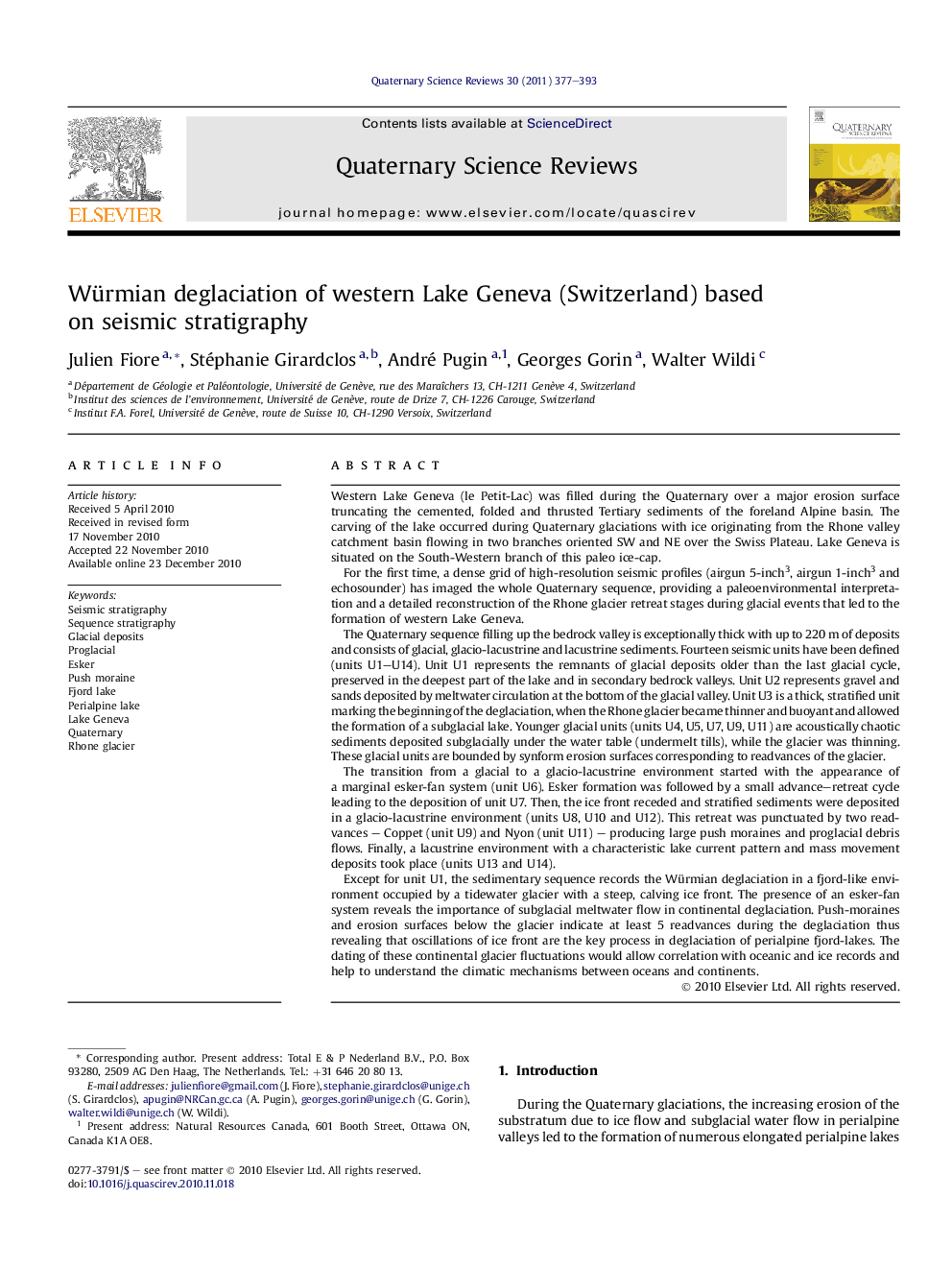| Article ID | Journal | Published Year | Pages | File Type |
|---|---|---|---|---|
| 4737037 | Quaternary Science Reviews | 2011 | 17 Pages |
Western Lake Geneva (le Petit-Lac) was filled during the Quaternary over a major erosion surface truncating the cemented, folded and thrusted Tertiary sediments of the foreland Alpine basin. The carving of the lake occurred during Quaternary glaciations with ice originating from the Rhone valley catchment basin flowing in two branches oriented SW and NE over the Swiss Plateau. Lake Geneva is situated on the South-Western branch of this paleo ice-cap.For the first time, a dense grid of high-resolution seismic profiles (airgun 5-inch3, airgun 1-inch3 and echosounder) has imaged the whole Quaternary sequence, providing a paleoenvironmental interpretation and a detailed reconstruction of the Rhone glacier retreat stages during glacial events that led to the formation of western Lake Geneva.The Quaternary sequence filling up the bedrock valley is exceptionally thick with up to 220 m of deposits and consists of glacial, glacio-lacustrine and lacustrine sediments. Fourteen seismic units have been defined (units U1–U14). Unit U1 represents the remnants of glacial deposits older than the last glacial cycle, preserved in the deepest part of the lake and in secondary bedrock valleys. Unit U2 represents gravel and sands deposited by meltwater circulation at the bottom of the glacial valley. Unit U3 is a thick, stratified unit marking the beginning of the deglaciation, when the Rhone glacier became thinner and buoyant and allowed the formation of a subglacial lake. Younger glacial units (units U4, U5, U7, U9, U11) are acoustically chaotic sediments deposited subglacially under the water table (undermelt tills), while the glacier was thinning. These glacial units are bounded by synform erosion surfaces corresponding to readvances of the glacier.The transition from a glacial to a glacio-lacustrine environment started with the appearance of a marginal esker-fan system (unit U6). Esker formation was followed by a small advance–retreat cycle leading to the deposition of unit U7. Then, the ice front receded and stratified sediments were deposited in a glacio-lacustrine environment (units U8, U10 and U12). This retreat was punctuated by two readvances – Coppet (unit U9) and Nyon (unit U11) – producing large push moraines and proglacial debris flows. Finally, a lacustrine environment with a characteristic lake current pattern and mass movement deposits took place (units U13 and U14).Except for unit U1, the sedimentary sequence records the Würmian deglaciation in a fjord-like environment occupied by a tidewater glacier with a steep, calving ice front. The presence of an esker-fan system reveals the importance of subglacial meltwater flow in continental deglaciation. Push-moraines and erosion surfaces below the glacier indicate at least 5 readvances during the deglaciation thus revealing that oscillations of ice front are the key process in deglaciation of perialpine fjord-lakes. The dating of these continental glacier fluctuations would allow correlation with oceanic and ice records and help to understand the climatic mechanisms between oceans and continents.
